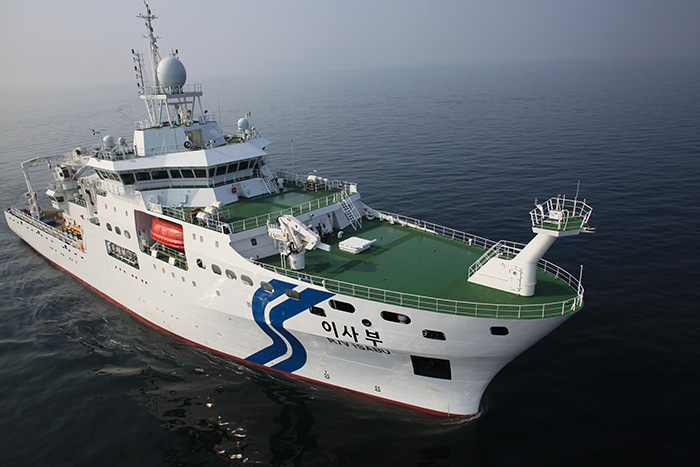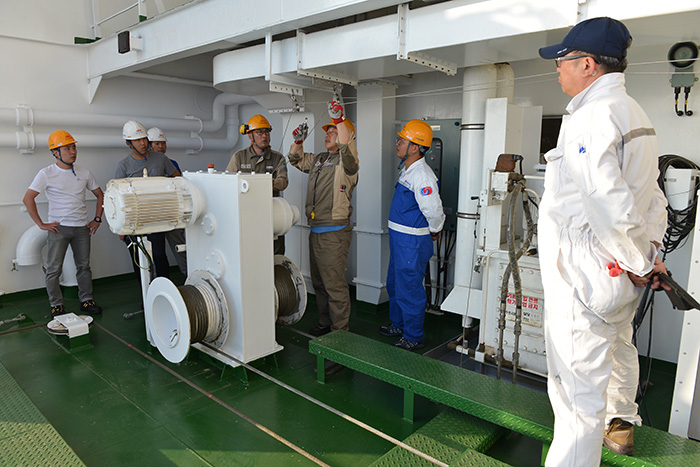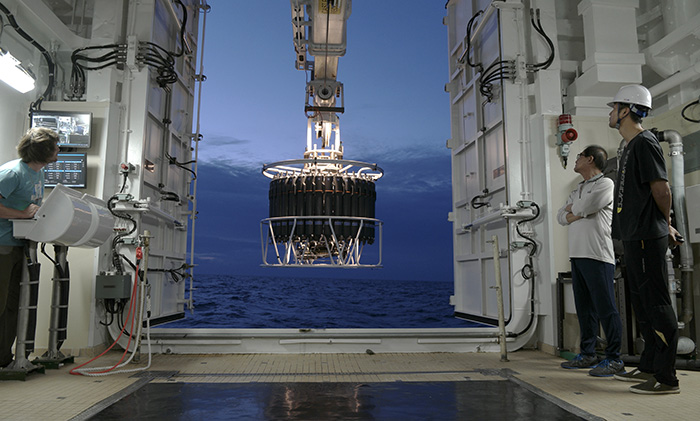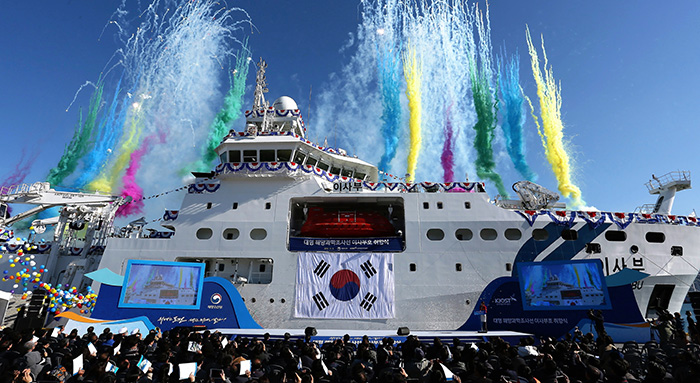-
 Korea.net's 24-hour YouTube channel
Korea.net's 24-hour YouTube channel- NEWS FOCUS
- ABOUT KOREA
- EVENTS
- RESOURCES
- GOVERNMENT
- ABOUT US

Korea's RV Isabu sets sail for the Pacific and Indian oceans.
A large-scale research ship, the RV Isabu, has raised anchor and embarked on its first ever expedition.
On Nov. 2, the Ministry of Oceans and Fisheries held a ceremony at the Busan Port International Passenger Terminal to celebrate the RV Isabu's maiden voyage, beginning a new chapter in oceanic research.
It took engineers six years and seven months to finish building the RV Isabu, a research vessel weighing 5,894 tons. The ship, at 100 meters from bow to stern, can sail at 27.78 kilometers per hour, or 15 knots. It can range up to 18,520 kilometers, or roughly for 55 straight days, without having to refuel. Up to 60 passengers, including scientists and crew, can live onboard.
Researchers aboard the RV Isabu have access to low-noise, low-vibration equipment that can conduct research at up to 8,000 meters below sea level. There are also underwater video cameras and some 40 different pieces of high-tech equipment on deck. Data collected onboard can be transmitted to land through the ship's communications network.

Researchers aboard the RV Isabu operate some of the equipment used for underwater research.

The RV Isabu is equipped with low-noise, low-vibration instruments that can explore waters up to 8,000 meters below sea level.
The Korea Institute of Ocean Science and Technology (KIOST) will be carrying out several types of research on board the RV Isabu. Starting in 2017, the institute will be studying the effects of climate change on the circulating currents of the northwest Pacific Ocean and the Indian Ocean. It will also collect data on organisms that live near underwater geothermal springs, where temperatures can range from 350 to 400 degrees Celsius.
By Lee Hana
Korea.net Staff Writer
Photos: KIOST
hlee10@korea.kr

A ceremony to celebrate the RV Isabu's maiden voyage is held at the Busan Port International Passenger Terminal on Nov. 2.
Most popular
- China warmly welcomes first Korea-born giant panda Fu Bao
- First hearing-impaired K-pop act hopes for 'barrier-free world'
- Novelist Hwang's 'Mater 2-10' shortlisted for Int'l Booker Prize
- Expats could account for 7% of population in 20 years: report
- Nat'l Fire Agency picks 137 elite staff for deployment abroad













